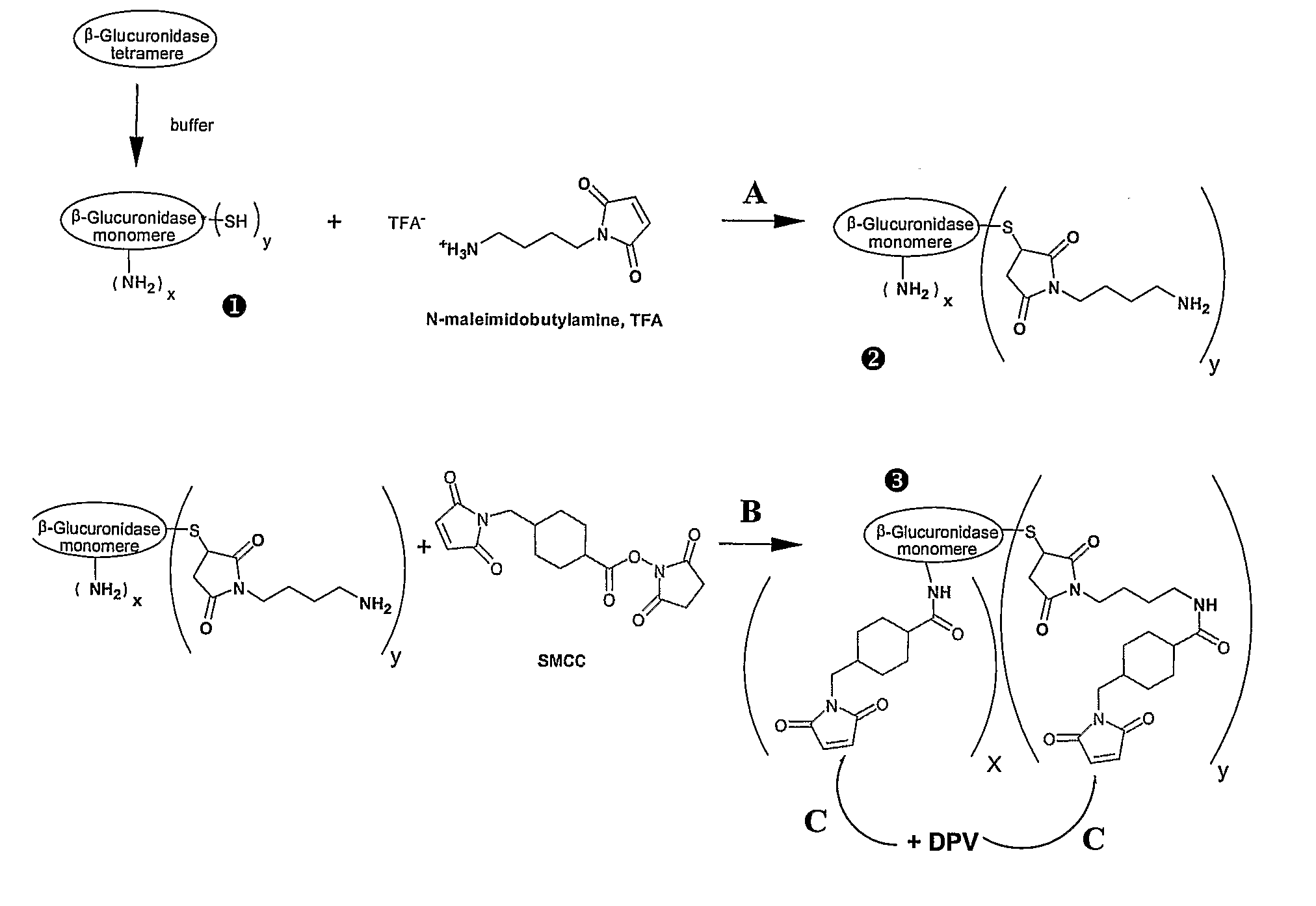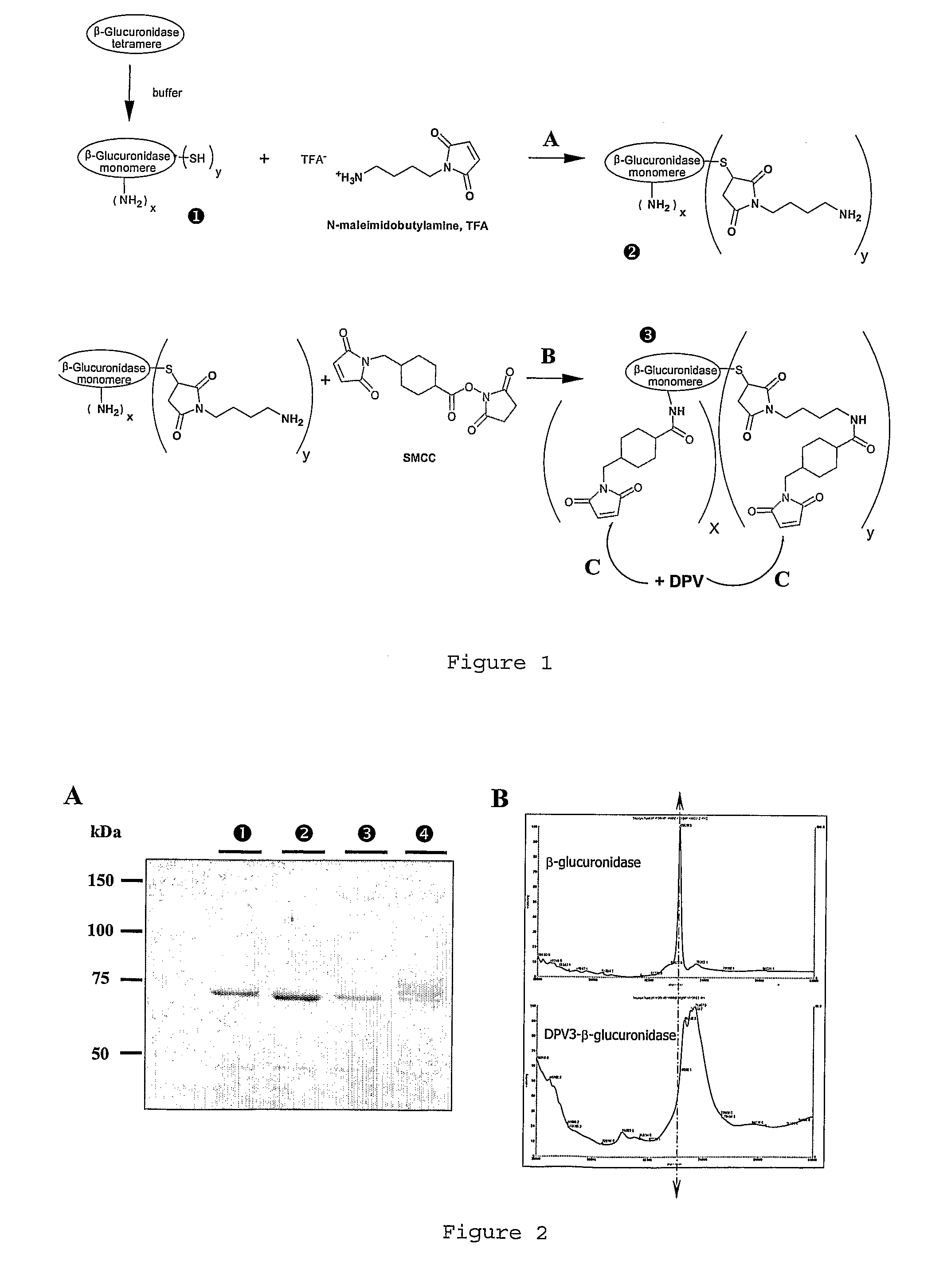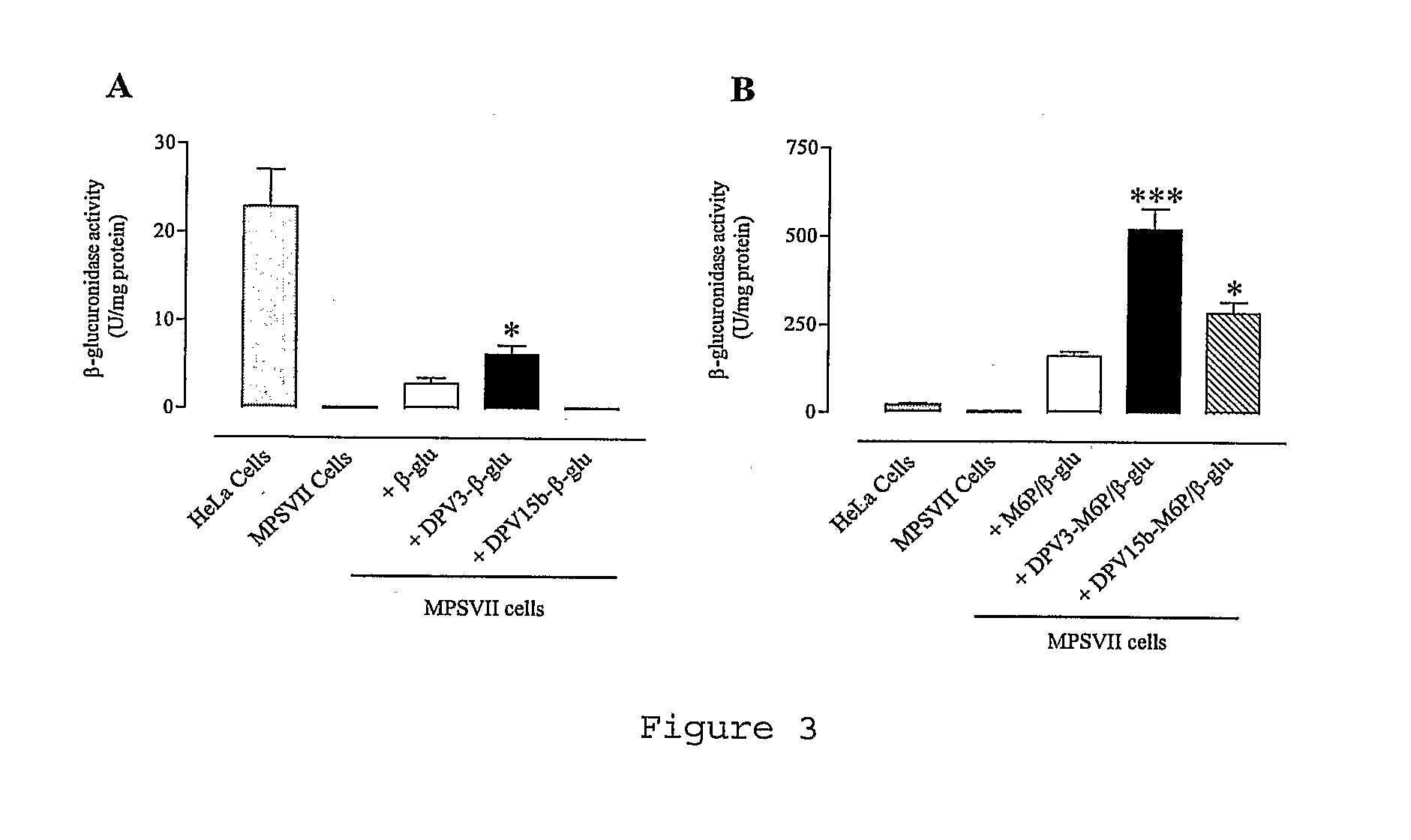Compositions and Methods for Treating Lysosomal Storage Diseases
a technology of lysosomal storage and composition, applied in the field of composition and methods of treating lysosomal storage disorders, can solve the problems of engorgement of organelles, cellular and tissue damage, and accumulation of undegradable substrates
- Summary
- Abstract
- Description
- Claims
- Application Information
AI Technical Summary
Benefits of technology
Problems solved by technology
Method used
Image
Examples
examples
[0119]Other advantages and characteristics of the invention will appear from the following examples which refer to the above figures. The examples are given to illustrate the invention but not to limit the scope of the claims.
I—Materials and Methods
I-1 Compounds
I-1-1 Peptides
[0120]DPV3 peptide (SEQ ID No 2) (manufactured by BACHEM). This CPP is known to transport reporter proteins to the cytoplam (De Coupade et al., Biochem J. 390:407-18 (2005)).
[0121]DPV15b peptide (SEQ ID No 12) (manufactured by Neosystem). This CPP is known to transport reporter proteins to the nucleus (De Coupade et al., Biochem J. 390:407-18 (2005)).
I-1-2 Enzymes
[0122]Non-phosphorylated enzyme: beta-glucuronidase (beta-glu) from Escherichia coli, Type VII-A (Sigma #G7646). This enzyme shows 47% of homology with human protein.
[0123]Phosphorylated enzyme: M6P-beta-glucuronidase (M6P / beta-glu) from bovine liver (GLYKO #GKGAG-5007).
I-1-3 Cell Lines
[0124]HeLa cells (ATCC #CCL-2): Human epithelial cells from uterine ...
PUM
| Property | Measurement | Unit |
|---|---|---|
| pKa | aaaaa | aaaaa |
| mass | aaaaa | aaaaa |
| pH | aaaaa | aaaaa |
Abstract
Description
Claims
Application Information
 Login to View More
Login to View More - R&D
- Intellectual Property
- Life Sciences
- Materials
- Tech Scout
- Unparalleled Data Quality
- Higher Quality Content
- 60% Fewer Hallucinations
Browse by: Latest US Patents, China's latest patents, Technical Efficacy Thesaurus, Application Domain, Technology Topic, Popular Technical Reports.
© 2025 PatSnap. All rights reserved.Legal|Privacy policy|Modern Slavery Act Transparency Statement|Sitemap|About US| Contact US: help@patsnap.com



